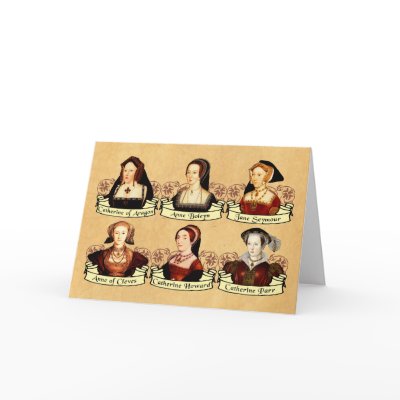

HENRY VIII AND HIS SIX WIVES
We already know that
teaching History can be something quite boring. Moreover, teaching History in
English to speakers of other languages can be something even worse.
This week I am working
the historical figure of Henry VIII and his six wives, Elizabeth I and William
Shakespeare.
First of all, I think
that the teacher's attitude it's something essential. If you want your lesson
to be boring, be sure it's gonna be boring but if you want it to be something
special and funny you have to live it!
I decided to explain the
life of Henry VIII and his six wives, the Tudors and the Reformation from the
point of view of gossip magazines. The intonation, the gestures, the informal
language made my class a better place to be!
After this explanation I
decided to use a great video I found in the Internet made by the BBC (God save
them!). Here you have the link and the lyrics:
HORRIBLE HISTORIES
- The Wives of Henry VIII (Terrible Tudors)
http://www.youtube.com/watch?v=-fadCAHjN-s
Divorced,
beheaded and died
Divorced, beheaded, survived
I'm Henry VIII, I had 6 sorry wives
Some might say I ruined their lives...
Catherine of Aragon was one
She failed to give me a son
I had to ask her for a divorce
That broke her poor heart of course
Young Anne Boleyn, she was two
Had a daughter, the best she could do
I said she flirted with some other man
And off for the chop went dear Anne
Lovely Jane Seymour was three
The love of a lifetime for me
She gave me a son, little prince Ed
Then poor old Jane went and dropped dead
Divorced, beheaded and died
Divorced, beheaded, survived
I'm Henry VIII, I had 6 sorry wives
Some might say I ruined their lives...
Anne of Cleeves came at four
I fell for a portrait I saw
Then laid eyes on her face and cried "She's a horse!
I must have another divorce!"
Catherine Howard was five
A child of 19, so alive
She flirted with others, no way to behave
The axe sent young Cath to her grave
Catherine Parr, she was last
By then all my best days were past
I lay on my deathbed aged just 55
Lucky young Catherine, the last, stayed alive
Divorced, beheaded and died
Divorced, beheaded, survived
I'm Henry VIII, I had 6 sorry wives
You could say I ruined their lives...
Divorced, beheaded, survived
I'm Henry VIII, I had 6 sorry wives
Some might say I ruined their lives...
Catherine of Aragon was one
She failed to give me a son
I had to ask her for a divorce
That broke her poor heart of course
Young Anne Boleyn, she was two
Had a daughter, the best she could do
I said she flirted with some other man
And off for the chop went dear Anne
Lovely Jane Seymour was three
The love of a lifetime for me
She gave me a son, little prince Ed
Then poor old Jane went and dropped dead
Divorced, beheaded and died
Divorced, beheaded, survived
I'm Henry VIII, I had 6 sorry wives
Some might say I ruined their lives...
Anne of Cleeves came at four
I fell for a portrait I saw
Then laid eyes on her face and cried "She's a horse!
I must have another divorce!"
Catherine Howard was five
A child of 19, so alive
She flirted with others, no way to behave
The axe sent young Cath to her grave
Catherine Parr, she was last
By then all my best days were past
I lay on my deathbed aged just 55
Lucky young Catherine, the last, stayed alive
Divorced, beheaded and died
Divorced, beheaded, survived
I'm Henry VIII, I had 6 sorry wives
You could say I ruined their lives...
After analyzing and commenting the lyrics (and
laugh a little) we moved on to the next activity: It's time to be a gossip
show!
One group of the students has to defend the wives
of Henry VIII and the rest of them to Henry himself. After having taking some
notes about what we are going to say, let's start with the show!
Things like: "Catherine of Aragon was very
boring because she was all day praying" or "Henry was said to have a
secret lover called Anne" can appear during the chatting.
Although this lesson seems to be quite simple we
have learnt something about English History, we have practiced past tenses and
the passive voice. Also, we learn to respect the turn of our classmates when
speaking and how to present our ideas in clear and ordered way.






